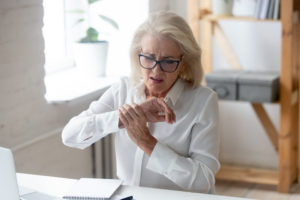
The study involved following 264 people with inflammatory arthritis for 12 weeks. All participants were required to file an online survey to see how they are coping during self-isolation. Of the 264 participants who took part, 26 were required to take follow-up telephone interviews with questions covering exercise, pain, fatigue, well-being, employment, managing daily activities, social support, and access to healthcare.
The study is ongoing, with surveys set to take place until July 30, as well as a follow-up interview as COVID-19 restrictions start to ease. However, early signs show that an average of 39 percent of patients have reported worsening symptoms, and 42 percent experienced lower energy levels. The majority of patients have also spoke about emotional fluctuations, from feeling positive to being isolated, anxious, and depressed.
Lead researcher Prof. Alex MacGregor, from UEA’s Norwich Medical School, said, “The majority of patients had reduced levels of physical activity—largely because they were not getting out of the house to exercise. The most worrying thing that we found is that a lot of patients reported worsening symptoms, along with lower energy levels. Symptoms such as pain flare ups and stiffness were in many cases put down to reduced activity and exercise. But many did not seek help because they didn’t want to over-burden the NHS while they were dealing with the pandemic, or they were too worried about picking up the virus in healthcare settings. Some missed blood tests, some didn’t know if hospital helplines were still in place, and not everyone was aware they could get medication delivered while they were shielding. Many found that telephone health appointments were no substitute for face-to-face contact and felt less able to discuss symptoms or emotional issues on the phone. When it comes to mental health, a few enjoyed the time at home and found that it helped their symptom management. However, the majority spoke of emotional fluctuations, between feeling positive to being isolated, depressed and anxious.”
He continued, “Many felt vulnerable and anxious, with a sense of being left behind or forgotten about as restrictions eased and life resumed for other people. And they were worried about the future because they were not sure if they would ever get out. Some said they would continue staying at home even if shielding guidelines were relaxed, and a few said only a vaccine would make them safe. Shielding advice was interpreted in different ways. Many weighed up the risk of infection against their physical and mental wellbeing, for example weighing up whether or not to take walks or just stay at home. We also found that some patients were working at home in ways which were not optimal for joint health—such as using laptops on dining tables. Only a few gained support from employers to set up ergonomic work spaces at home. Others struggled with additional demands such as childcare or had less help with household tasks whilst shielding.”
The far-reaching effects of the COVID-19 lockdown are just starting to be felt, including for those with inflammatory arthritis and rheumatoid arthritis. This study helps to outline the importance for clinicians and healthcare workers to offer more advice and ongoing additional support to help patients interpret guidance set by the local governments about COVID-19.